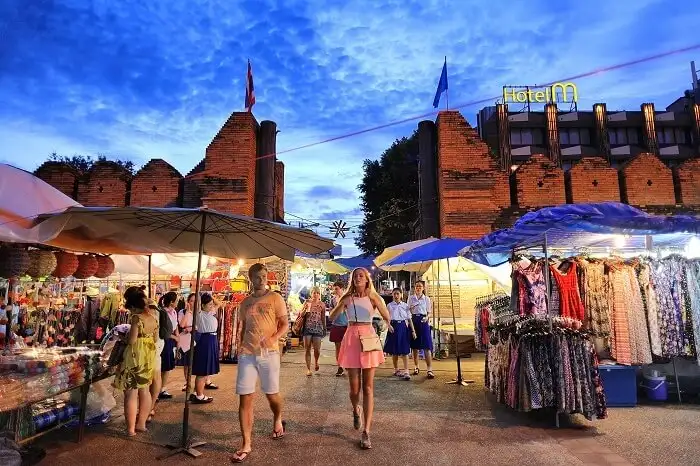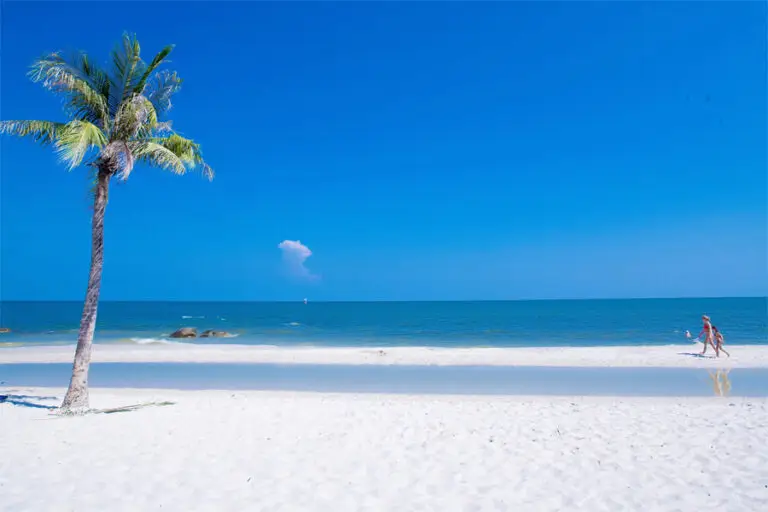Table of Contents
Chiang Mai: The Northern Jewel of Thailand
Tucked away in the mountainous embrace of Northern Thailand lies Chiang Mai, a city that seamlessly blends ancient traditions with contemporary flair. Often overshadowed by the bustling streets of Bangkok, Chiang Mai offers a tranquil retreat with its centuries-old temples, vibrant markets, and lush landscapes. As the cultural heart of Thailand, this city beckons travelers with its rich history, artisanal crafts, and the promise of an authentic Thai experience. Join us as we delve into the myriad wonders of Chiang Mai, the Northern Jewel that continues to enchant visitors from around the globe.

1. Chiang Mai: introduction to The Northern Gem
Nestled in the mountainous region of Northern Thailand, Chiang Mai stands as a testament to the country’s rich history and vibrant culture. Often referred to as the “Northern Rose,” this city is a haven for travelers seeking a blend of tradition and modernity.
Historical Legacy
Founded over seven centuries ago, Chiang Mai was once the capital of the ancient Lanna Kingdom. The city’s historical significance is evident in its well-preserved city walls, ancient temples, and intricate carvings that adorn its structures. The Old City, encircled by a moat, houses numerous relics and monuments that transport visitors back in time, offering glimpses of its glorious past.
Cultural Mosaic
Chiang Mai is not just a city; it’s a tapestry of diverse cultures and traditions. From the hill tribes that reside in its outskirts to the urban dwellers in the city center, Chiang Mai is a melting pot of ethnicities. This cultural fusion is celebrated in its festivals, arts, and daily life. The annual Songkran Festival, with its water fights and traditional parades, and the Loi Krathong Festival, where thousands of lanterns are released into the sky, are just a few examples of the city’s vibrant celebrations.
Natural Splendor
Beyond its cultural and historical allure, Chiang Mai is a gateway to nature’s wonders. The city is surrounded by dense forests, cascading waterfalls, and serene hot springs. The Doi Suthep Mountain, with its golden temple perched atop, offers panoramic views of the city and is a favorite among both locals and tourists. For those seeking adventure, jungle treks, river rafting, and elephant sanctuaries provide unique experiences amidst the region’s natural beauty.
Modern Evolution
While Chiang Mai cherishes its roots, it has also embraced the winds of change. The city has seen a surge in modern infrastructure, trendy cafes, and digital hubs, making it a hotspot for digital nomads from around the world. Its bustling night markets, contemporary art scenes, and innovative culinary offerings showcase the city’s ability to adapt and evolve while staying true to its essence.
In essence, Chiang Mai is a city where the past and present coalesce, offering travelers a unique journey through time, culture, and nature. Whether you’re wandering through its ancient lanes, savoring its culinary delights, or exploring its natural wonders, Chiang Mai promises an experience that lingers in the heart long after the journey ends

2. Chiang Mai’s Geographical Tapestry: At the Heart of the North
Situated in the northern part of Thailand, Chiang Mai is a city that finds its home amidst a landscape of rolling hills, verdant valleys, and meandering rivers. Often referred to as the “Rose of the North,” its geographical location has played a pivotal role in shaping its cultural, historical, and economic significance.
Positioned in the Valley:
Nestled within the Ping River basin, Chiang Mai is surrounded by mountains and lush forests, creating a natural fortress. This valley setting not only offers breathtaking scenic views but has also historically provided a strategic advantage, protecting the city from potential invaders.
Flanked by the Mountains:
To the west of Chiang Mai stands the Thanon Thong Chai Range, with the prominent Doi Suthep and Doi Pui peaks overlooking the city. These mountains are not just geographical landmarks but also hold spiritual significance, with temples like Wat Phra That Doi Suthep offering both spiritual solace and panoramic vistas of the city below.
Bisected by the Ping River:
The Ping River, a major tributary of the Chao Phraya River, flows through the city, providing vital water resources for agriculture and daily life. Historically, the river has been a lifeline for trade and transportation, connecting Chiang Mai to other parts of the country.
Proximity to Neighboring Countries:
Chiang Mai’s northern location places it closer to the borders of Myanmar and Laos. This proximity has influenced the city’s culture, trade, and cuisine, with a fusion of Thai, Burmese, and Laotian elements evident in its daily life.
In essence, Chiang Mai’s geographical location, with its valley setting, mountainous backdrop, and riverine landscape, has been instrumental in shaping its identity. It’s a place where nature and civilization intertwine, creating a tapestry of experiences that beckon travelers from near and far.

3. Chiang Mai Climate: A Symphony of Seasons
Chiang Mai, situated in the northern region of Thailand, boasts a climate that is distinct from the typical tropical weather found in most parts of the country. Its location in a valley surrounded by mountains plays a significant role in shaping its weather patterns, offering residents and visitors a more temperate experience compared to the coastal regions.
Cool Season (November to February):
Often considered the best time to visit, the cool season in Chiang Mai is characterized by mild temperatures, clear blue skies, and a refreshing breeze. Daytime temperatures hover around 25°C (77°F), while nights can be cooler, sometimes dropping to 15°C (59°F). It’s the perfect time for outdoor activities, exploring the city’s historical sites, and indulging in local festivals.
Hot Season (March to June):
As the name suggests, the hot season witnesses a significant rise in temperatures, with daytime highs often reaching 35°C (95°F) or more. While the mornings and evenings remain relatively pleasant, midday can be scorching. It’s advisable to stay hydrated and avoid direct sunlight during peak hours. The end of the hot season is marked by the Songkran Festival, where locals and tourists engage in playful water fights, providing a much-needed respite from the heat.
Rainy Season (July to October):
The monsoon season brings with it regular downpours, turning the landscape into a lush green paradise. While the rain can be heavy at times, it usually occurs in short bursts, often in the late afternoon or evening. Temperatures during this season range between 25°C (77°F) and 30°C (86°F). The rain breathes life into the region’s waterfalls and rivers, making it an ideal time for nature enthusiasts to explore Chiang Mai’s natural beauty.
You may also want to consult our article dedicated to Chiang Mai Burning Season.

4. Chiang Mai Tourist Attractions: A Journey Through Time and Beauty
Chiang Mai, with its rich tapestry of history, culture, and natural beauty, offers a plethora of attractions that captivate the hearts of travelers. From ancient temples to bustling markets, and serene nature spots, the city promises an unforgettable experience for every visitor.
1. Doi Suthep Temple:
Perched atop the Doi Suthep mountain, this temple is one of Chiang Mai’s most iconic landmarks. The golden pagoda, intricate murals, and the panoramic view of the city below make it a must-visit. The 300-step staircase, flanked by Naga serpents, leads to this sacred sanctuary.
2. Doi Inthanon National Park:
Known as the “Roof of Thailand,” Doi Inthanon is the country’s highest peak. The national park is a haven for nature lovers, boasting waterfalls, lush forests, and unique flora and fauna. The Twin Pagodas, dedicated to the King and Queen, offer stunning views of the surrounding landscape.
3. Chiang Mai Old City:
Enclosed by ancient walls and a moat, the Old City is a historical treasure trove. Meandering through its narrow lanes, one can discover a myriad of temples, traditional wooden houses, and bustling markets such as the Chiang Mai Night Bazaar.
4. Tha Phae Gate:
Once the main entrance to the Old City, Tha Phae Gate is now a hub for cultural events and festivals. The surrounding area comes alive in the evening with street performers, food stalls, and local artisans selling their crafts.
5. Chiang Mai Night Safari:
Experience the thrill of the wild with this nocturnal adventure. The safari offers a chance to see various animals in their natural habitat, from fierce predators to gentle herbivores.
6. Wat Chedi Luang:
This historic temple, with its massive chedi (stupa) partially in ruins, stands as a testament to the architectural grandeur of ancient Lanna. The temple complex also houses the City Pillar and hosts monk chat sessions, where visitors can converse with monks and learn about Buddhism.
7. Elephant Nature Park:
Dedicated to the rescue and rehabilitation of elephants, this sanctuary offers a humane and ethical way to interact with these majestic creatures. Visitors can feed, bathe, and learn about the elephants’ stories of rescue and recovery.
8. Warorot Market (Kad Luang):
A bustling local market where one can find everything from fresh produce and street food to handicrafts and clothing. It’s a sensory delight and a glimpse into the daily lives of the locals.
9. Nimmanhaemin Road (Nimman):
Chiang Mai’s trendy neighborhood, Nimman is lined with chic cafes, art galleries, boutique shops, and vibrant nightlife spots. It’s the perfect place to relax, shop, and soak in the city’s modern vibes.
10. Mae Sa Waterfall:
Located just a short drive from the city, this cascading waterfall set amidst lush greenery is a perfect spot for a refreshing dip and a picnic.
You may also want to visit the famous San Kamphaeng hot spring during your trip to Chiang Mai.

5. Cuisine
Bangkok, often referred to as the culinary capital of Southeast Asia, is a gastronomic delight that promises an unforgettable journey for the taste buds. The city’s cuisine is a harmonious blend of flavors, textures, and aromas, reflecting its rich cultural heritage and cosmopolitan spirit.
Street Food Culture:
- Vibrant and Diverse: The streets of Bangkok come alive with a myriad of food stalls, each offering a unique culinary experience. From sizzling woks to simmering pots, the city’s sidewalks are a testament to its vibrant food culture.
- Local Favorites: Dishes such as Som Tam (spicy green papaya salad), Moo Ping (grilled pork skewers), and Khanom Buang (Thai crispy pancakes) are street food staples that offer a burst of authentic Thai flavors.
Upscale Dining:
- Gourmet Experiences: For those seeking a more refined dining experience, Bangkok boasts a range of upscale restaurants that serve both traditional Thai dishes and international cuisines. Many of these establishments have earned accolades and awards for their culinary excellence.
- Ambiance and Views: Several high-end restaurants are located by the Chao Phraya River or atop skyscrapers, offering diners breathtaking views of the cityscape while they savor gourmet meals.
Must-Try Dishes:
- Pad Thai: A stir-fried noodle dish that combines the flavors of tamarind, fish sauce, and chili. Often served with shrimp, chicken, or tofu, it’s garnished with crushed peanuts, lime wedges, and fresh herbs.
- Tom Yum Goong: A tangy and spicy shrimp soup infused with aromatic herbs like lemongrass, galangal, and kaffir lime leaves. Its fiery kick and sour undertones make it a favorite among spice enthusiasts.
- Mango Sticky Rice: A delectable dessert made of glutinous rice, sweet ripe mangoes, and drizzled with creamy coconut sauce. Topped with toasted sesame seeds or mung beans, it’s a perfect blend of sweetness and texture.
Beverages and Sweets:
- Thai Iced Tea: A creamy and refreshing drink made from strongly brewed tea, sweetened with sugar, and topped with condensed milk. Its vibrant orange hue and sweet taste make it a popular choice among locals and tourists alike.
- Khanom Chan: A traditional Thai dessert, these are steamed layer cakes made from coconut milk, sugar, and tapioca flour. Their jelly-like consistency and subtle sweetness are a treat for the palate.

6. Navigating Chiang Mai: A Guide to Transportation
Chiang Mai, with its blend of ancient charm and modern conveniences, offers a variety of transportation options that cater to the needs of both locals and tourists. Whether you’re exploring the historic Old City or venturing into the surrounding countryside, getting around is both easy and enjoyable.
1. Songthaews (Red Trucks):
The most iconic mode of transport in Chiang Mai, Songthaews are shared pick-up trucks painted in bright red. They operate like shared taxis, picking up passengers along the way and dropping them off at their desired destinations. Simply flag one down, negotiate the fare, and hop in!
2. Tuk-Tuks:
These three-wheeled motorized rickshaws are perfect for short distances. Always a fun experience, ensure you agree on a price before starting your journey. They’re especially handy for navigating the narrow lanes of the Old City.
3. Motorbike and Scooter Rentals:
For those seeking a bit more freedom and adventure, renting a motorbike or scooter is a popular choice. It allows you to explore at your own pace, but do ensure you’re familiar with local traffic rules and always wear a helmet.
4. Bicycles:
Chiang Mai’s relatively flat terrain makes it ideal for cycling. Many guesthouses and rental shops offer bicycles for hire, providing an eco-friendly way to explore the city and its surroundings.
5. Grab and Ride-Hailing Apps:
Modern conveniences have made their way to Chiang Mai, with apps like Grab offering taxi and motorbike services. It’s a convenient option, especially if you prefer a fixed price and the ability to track your journey.
6. Traditional Taxis:
While not as common as in larger cities, metered taxis are available, especially at the airport and major tourist spots. They offer the comfort of air-conditioning and are ideal for longer distances.
7. Buses:
Chiang Mai’s bus system, though limited, connects major tourist attractions and shopping areas. The R1, R2, R3, and R4 routes are especially handy for tourists, with air-conditioned buses and clear signage in English.
8. Airport Transfers:
Chiang Mai International Airport, located close to the city center, offers various transportation options, including taxis, car rentals, and shuttle services, making it easy for travelers to reach their accommodations.
9. Train and Bus Stations:
For those venturing beyond Chiang Mai, the city’s train and bus stations connect to other major destinations in Thailand. Whether you’re heading to Bangkok or exploring the northern provinces, there are multiple daily departures to choose from.
10. Boat Rides:
While not a primary mode of transport, taking a boat ride along the Ping River offers a unique perspective of Chiang Mai. It’s a leisurely way to see the city and enjoy the scenic beauty.
If you decide to come to Chiang Mai by train, you may be interested in our article on Bangkok to Chiang Mai by train.

7. Chiang Mai Shopping: A Blend of Tradition and Trend
Chiang Mai, often dubbed as the cultural heart of Thailand, offers a shopping experience that mirrors its rich heritage and contemporary vibes. From bustling markets filled with handicrafts to chic boutiques showcasing modern designs, the city is a shopper’s paradise.
1. Night Bazaar:
Located in the heart of the city, the Night Bazaar is a must-visit for every traveler. As the sun sets, the streets come alive with stalls selling everything from traditional Thai crafts, clothing, jewelry, to street food. Don’t forget to haggle to get the best deals!
2. Warorot Market (Kad Luang):
A local favorite, this market offers a more authentic shopping experience. Dive into the labyrinth of stalls to find local produce, spices, textiles, and souvenirs. The adjacent Ton Lamyai flower market is a visual treat.
3. Nimmanhaemin Road:
Often referred to as ‘Nimman’, this trendy area is lined with boutiques, art galleries, and design shops. It’s the perfect place to find unique fashion pieces, home decor, and handmade jewelry.
4. Sankampaeng Handicraft Village:
For those keen on understanding the craftsmanship behind Thai products, a trip to this village is essential. Watch artisans at work, creating silk fabrics, silverware, lacquerware, and more. It’s also an excellent place to buy high-quality souvenirs.
5. Tha Pae Walking Street:
Every Sunday, the historic Tha Pae Road transforms into a vibrant market. Local artisans display their crafts, musicians entertain the crowds, and food stalls offer delicious treats. It’s a great place to shop for handmade goods and enjoy the local atmosphere.
6. Central Plaza Chiang Mai Airport:
This modern shopping mall, located near the airport, houses international brands, a cinema, and a variety of dining options. It’s a one-stop destination for fashion, electronics, and entertainment.
7. Wualai Road Saturday Market:
Similar to the Sunday market but located in the silversmith district, this market is a haven for silver jewelry. Alongside, you can find handicrafts, clothing, and local snacks.
8. Maya Lifestyle Shopping Center:
Situated in the Nimman area, this contemporary mall offers a mix of international and local brands, a rooftop food court, and entertainment zones.
9. Bor Sang Umbrella Village:
Located a short drive from the city, this village is renowned for its hand-painted umbrellas and fans. Witness the intricate process of making these colorful items and pick up a unique souvenir.
10. One Nimman:
A relatively new addition to Chiang Mai’s shopping scene, One Nimman is an artsy complex with boutique shops, art spaces, and gourmet eateries. Its architecture and design are worth admiring.

8. Essential Tips for Travelers in Chiang Mai
Chiang Mai, with its rich tapestry of culture, history, and natural beauty, is a destination that beckons travelers from around the world. To ensure a seamless and enriching experience in this Northern Thai gem, here are some essential tips for travelers:
1. Respect Local Customs:
Thai culture is deeply rooted in respect and courtesy. When visiting temples, dress modestly by covering your shoulders and knees. Remove your shoes before entering religious sites or someone’s home.
2. Greet with a Wai:
The traditional Thai greeting, the ‘Wai’, involves placing your palms together and bowing slightly. It’s a sign of respect and is appreciated, especially when interacting with elders.
3. Stay Hydrated:
Chiang Mai can get quite hot, especially during the summer months. Carry a reusable water bottle and stay hydrated throughout the day.
4. Beware of Scams:
While Chiang Mai is generally safe, be cautious of touts offering unsolicited advice or deals that seem too good to be true. Always negotiate prices beforehand, especially with tuk-tuks and taxis.
5. Learn Basic Thai Phrases:
While many locals speak English, especially in tourist areas, learning a few basic Thai phrases can enhance your interactions and show appreciation for the local culture. Simple words like “Sawasdee” (Hello) and “Khob Khun” (Thank you) can go a long way.
6. Use Local Currency:
Thai Baht is the official currency. While credit cards are accepted in many places, it’s advisable to carry some cash, especially when shopping at local markets or using public transport.
7. Be Mindful of the Environment:
Chiang Mai is known for its natural beauty. Reduce your environmental footprint by avoiding single-use plastics, disposing of waste responsibly, and supporting eco-friendly activities.
8. Attend Local Festivals:
If your visit coincides with local festivals like Songkran or Loy Krathong, participate and immerse yourself in the local culture. However, always be respectful and understand the significance of these events.
9. Try Local Cuisine:
Chiang Mai offers a culinary journey like no other. From street food stalls to upscale restaurants, be adventurous and savor local dishes like Khao Soi, Sai Oua, and Mango Sticky Rice.
10. Stay Connected:
Consider getting a local SIM card for easy connectivity. It’s affordable and provides good coverage, ensuring you stay connected with loved ones and can access online resources.
11. Travel Insurance:
It’s always a good idea to have travel insurance that covers medical emergencies, trip cancellations, and lost belongings. Ensure you’re adequately covered before embarking on your journey.
12. Respect Wildlife:
If you’re considering visiting animal attractions, research beforehand to ensure they follow ethical practices. Avoid places that exploit animals for entertainment.









